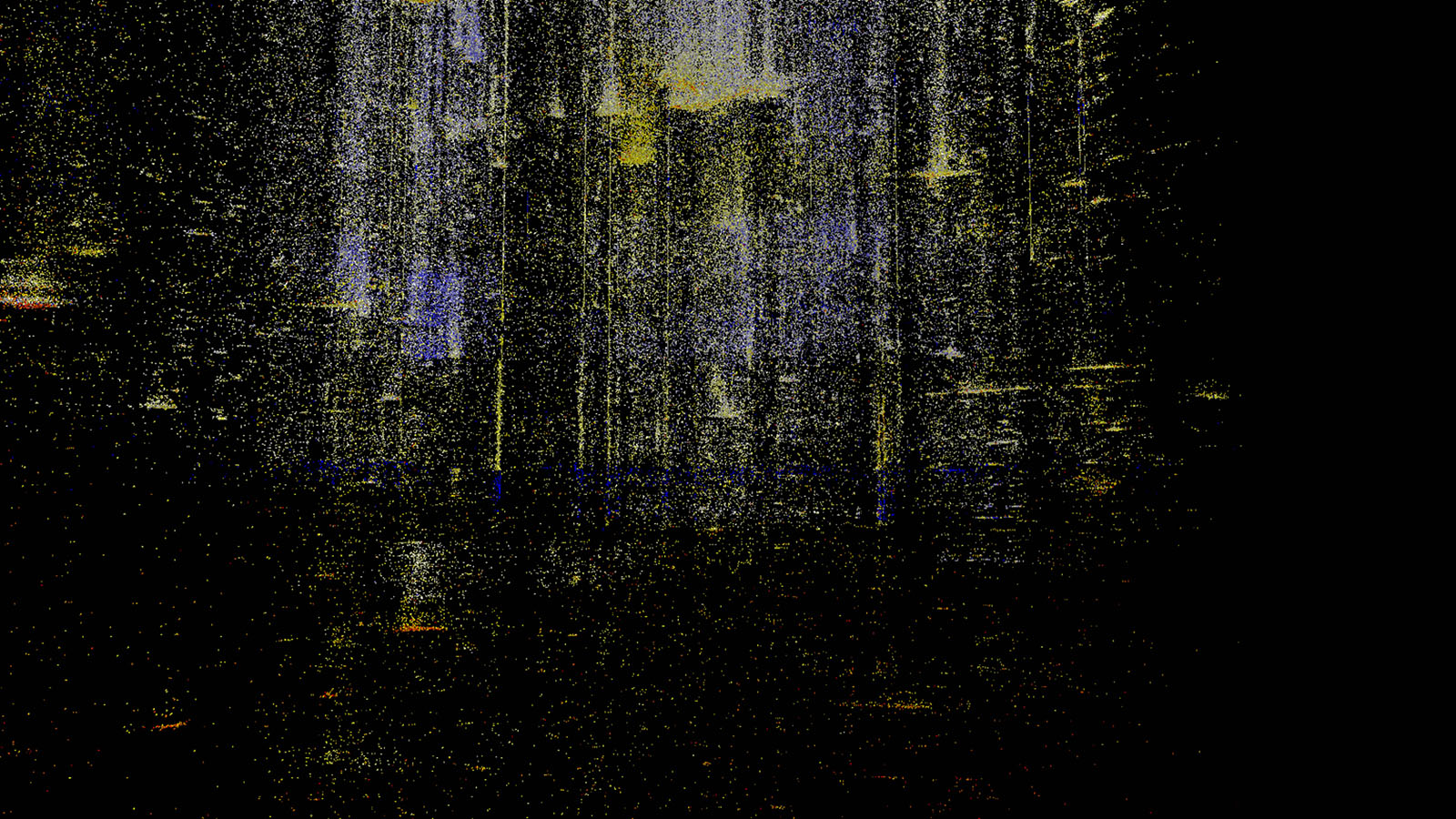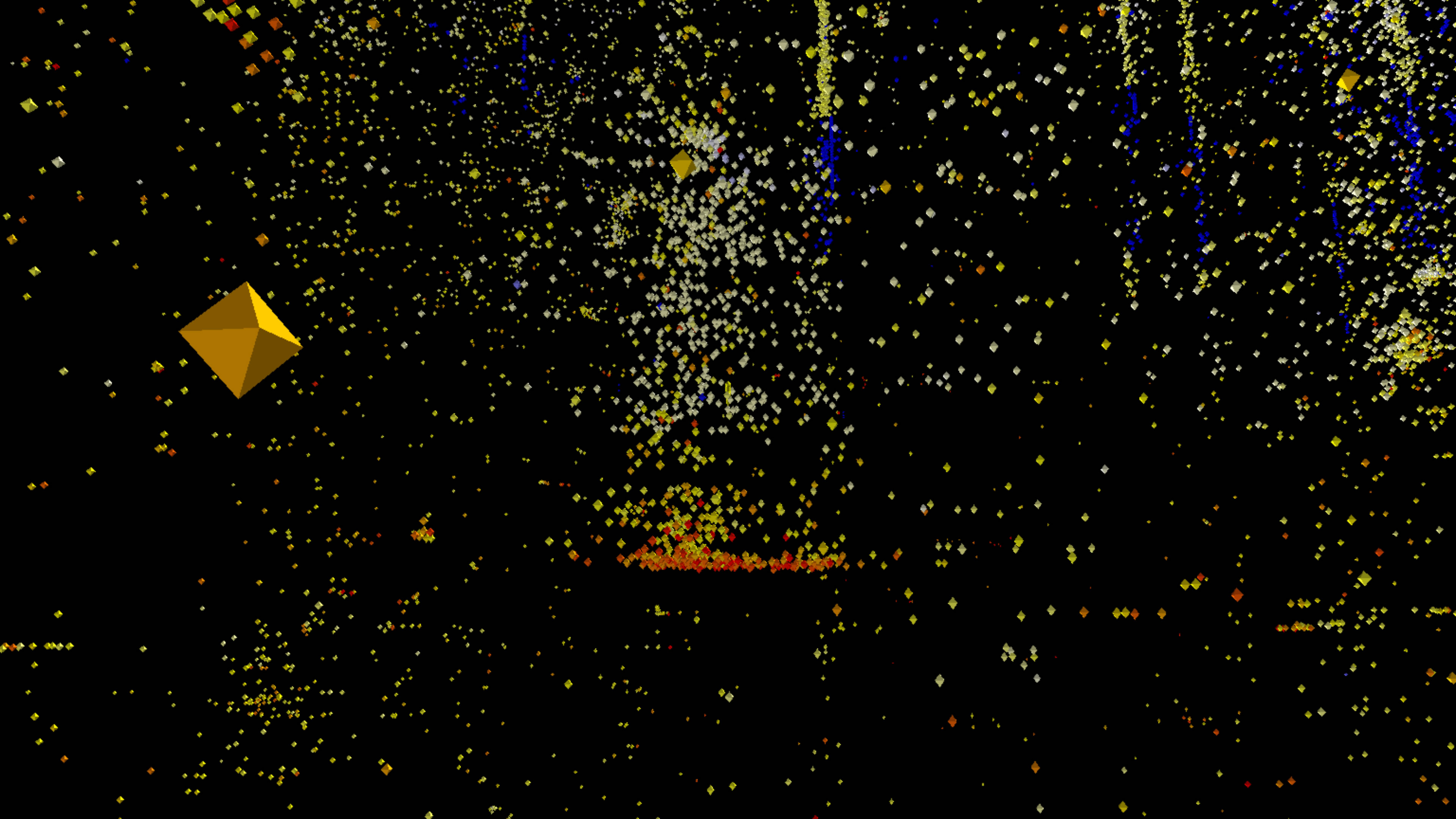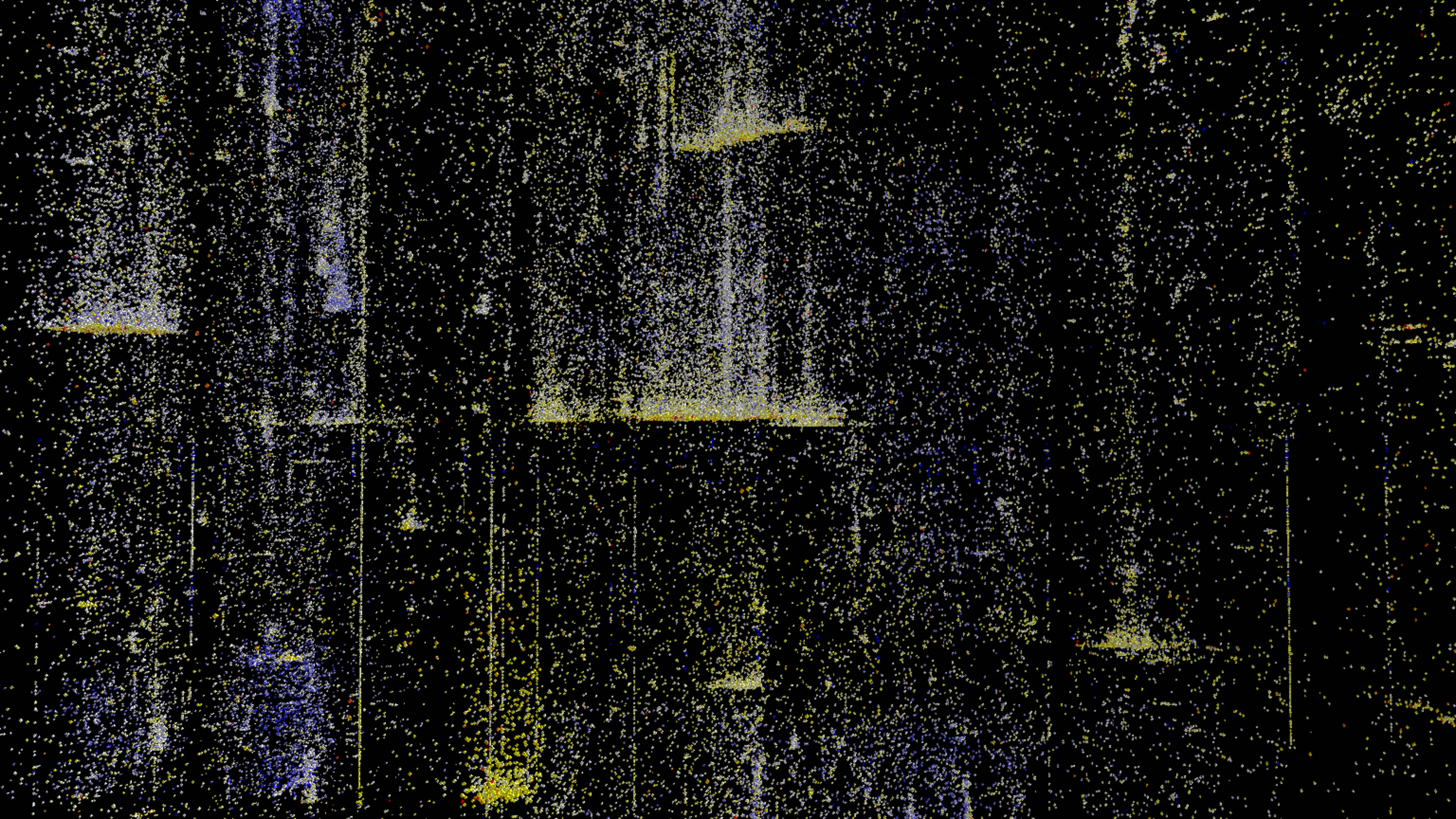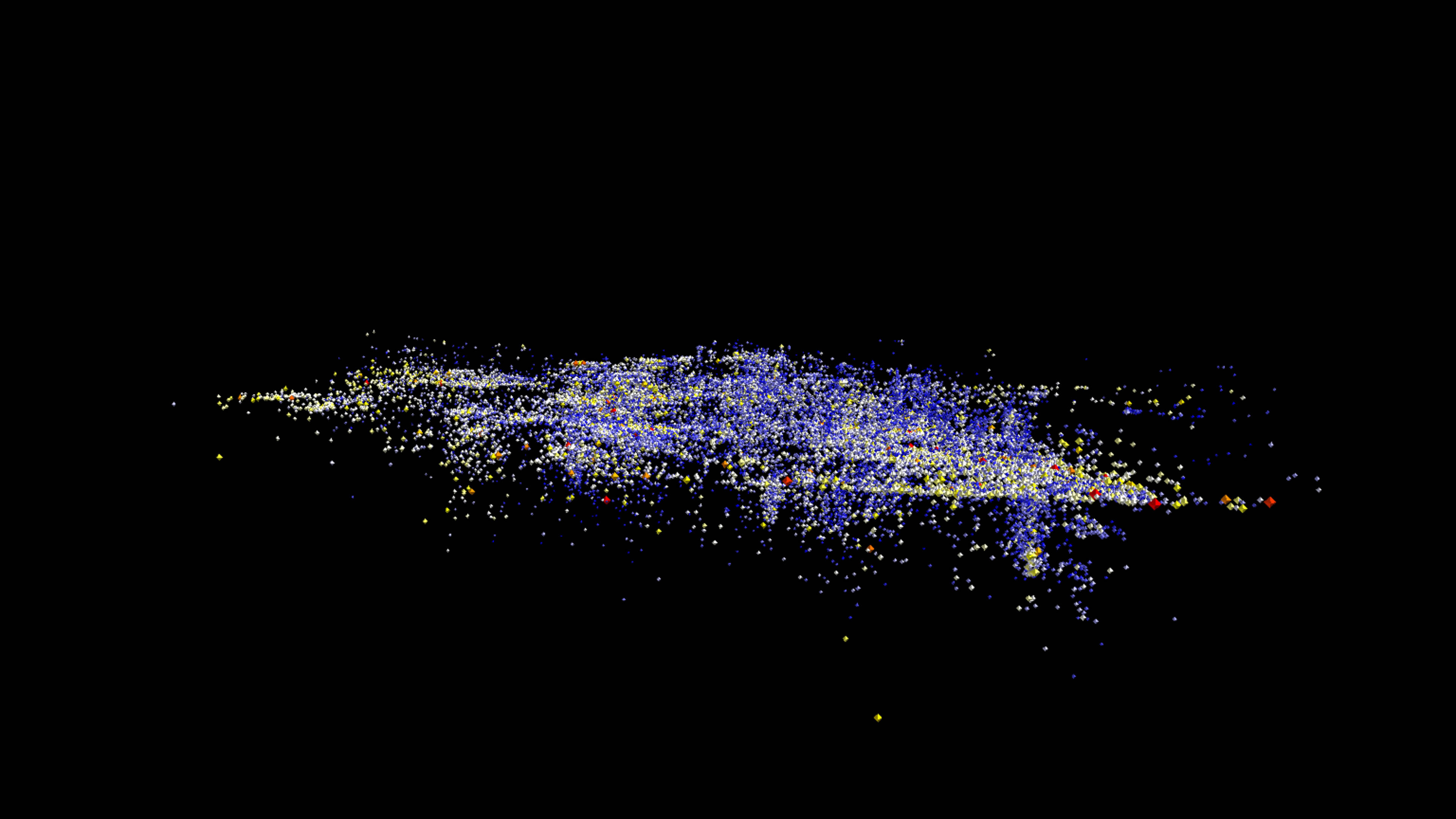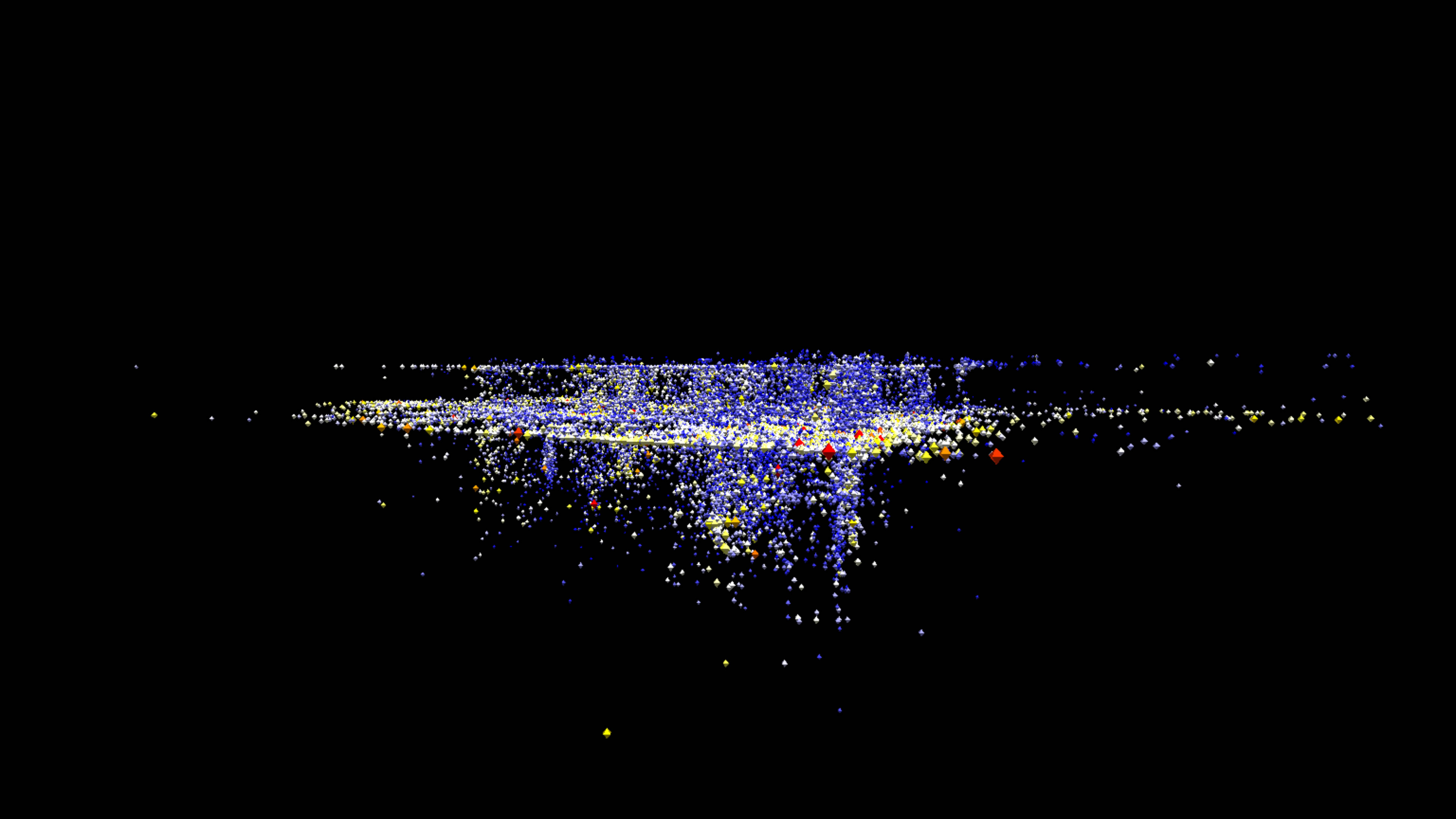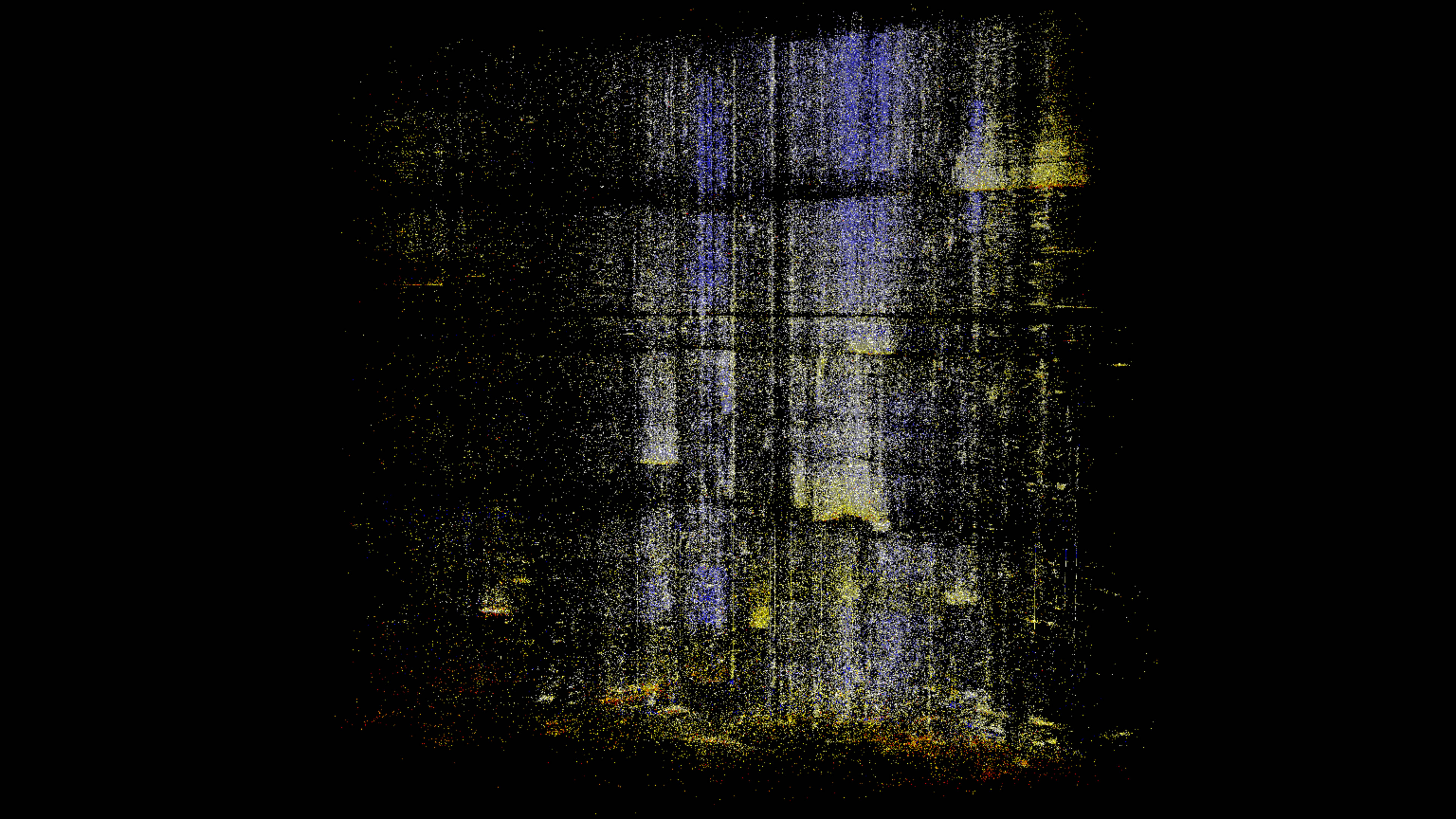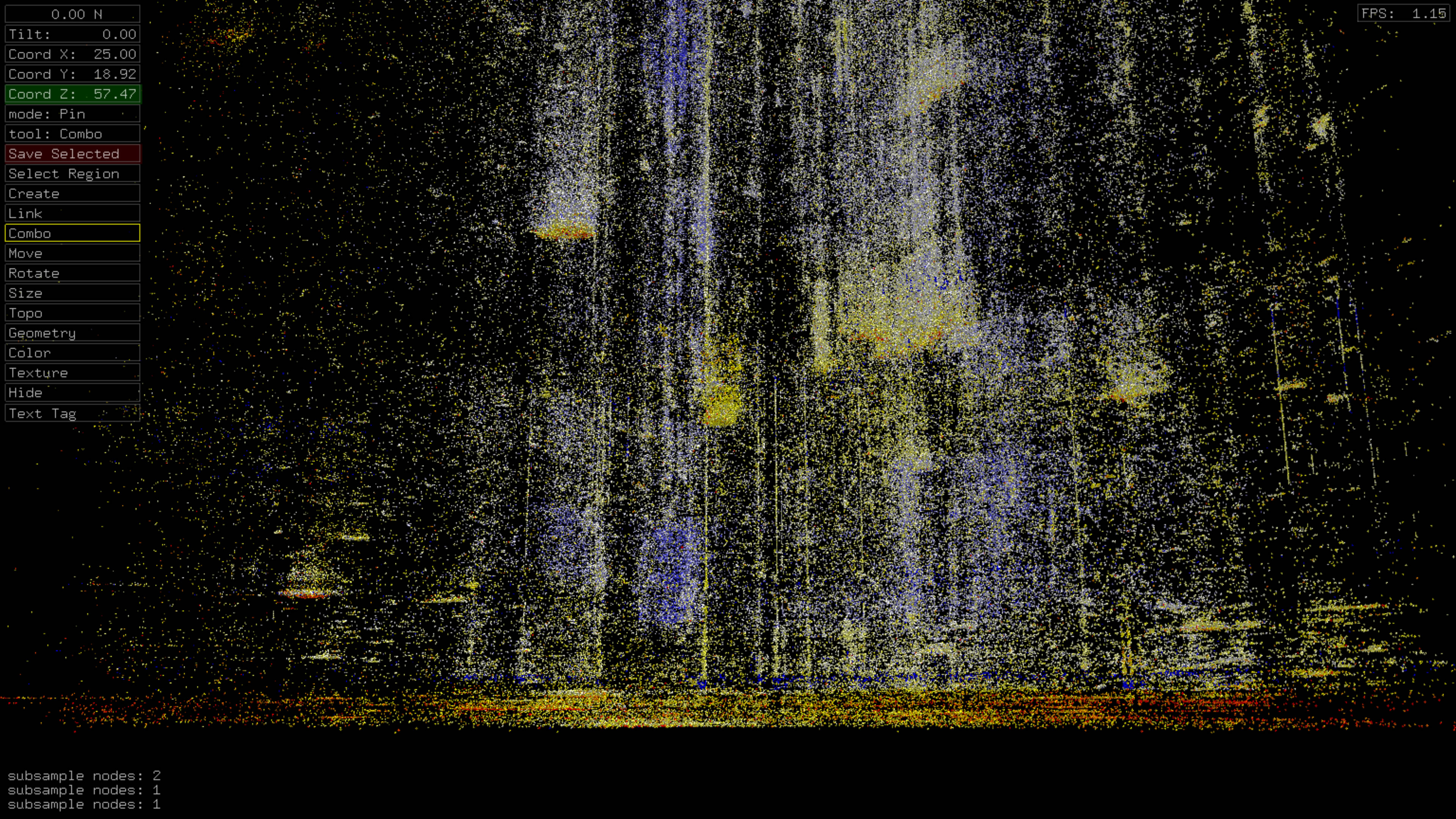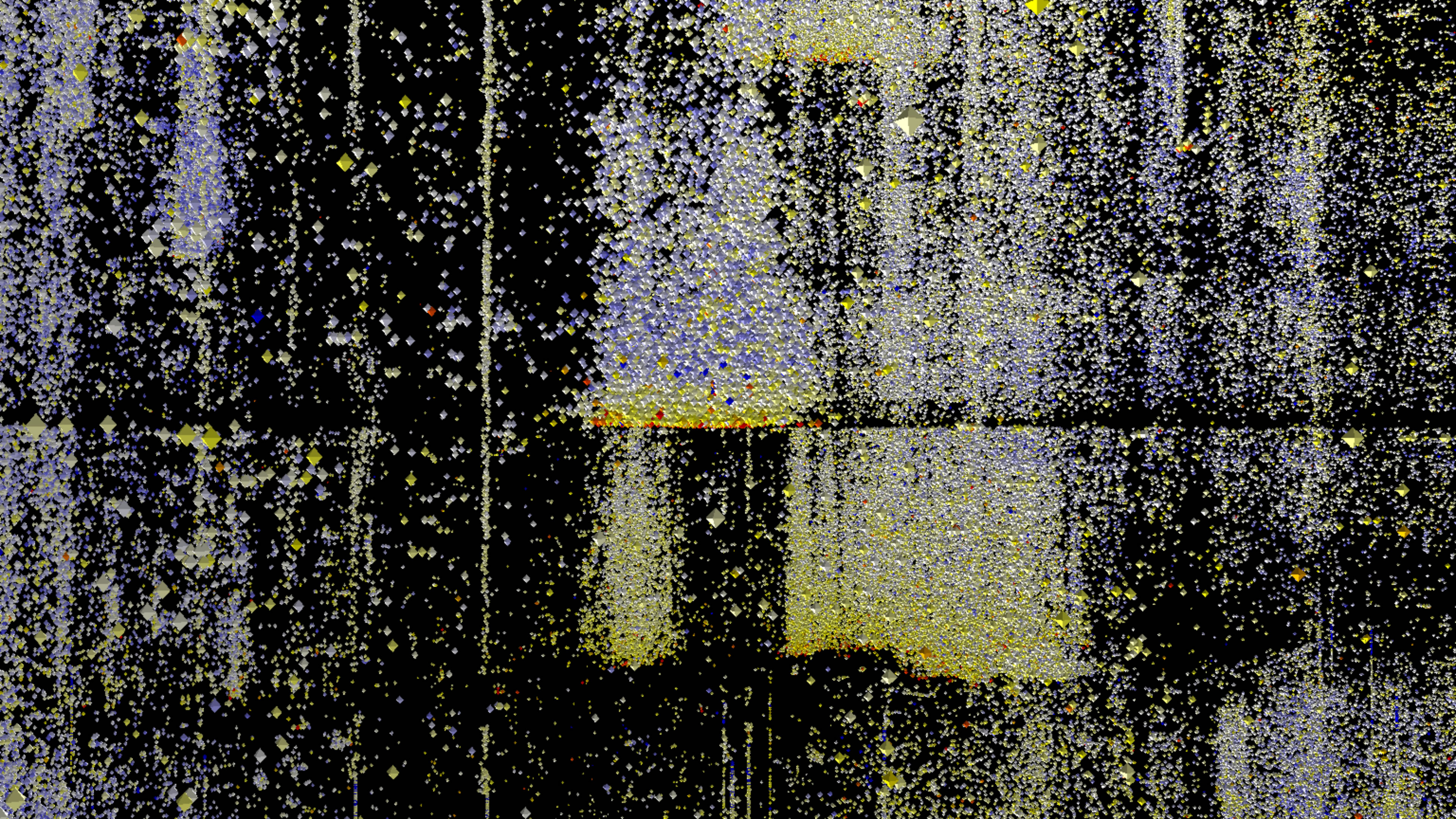SCEC Earthquake Data Visualizations
Data
Data was obtained from the SCEC site in an ascii flat file database. I converted it to a CSV containing the primary parameters including date, time, latitude, longitude, depth, and magnitude.
Earthquake Latitude/Longitude vs. Time
Download a Windows version of the ANTz visualization with date and time for translate_z.
For Mac OS X users, download the generic Mac OS X version and the Windows version and swap the usr folder from the Windows version with the usr folder for the Mac version.
In these images, earthquakes are plotted with latitude and longitude vs. time (time is vertical). This creates a unique appearance of dissipation over time. Objects are simply octahedra with color corresponding to earthquake magnitude.
Earthquake Latitude/Longitude vs. Depth
Download a Windows version of the ANTz visualization with depth for translate_z.
For Mac OS X users, download the generic Mac OS X version and the Windows version and swap the usr folder from the Windows version with the usr folder for the Mac version.
This is the more conventional way of visualization earthquakes, geolocated in space using latitude, longitude, and depth. This dataset contains many quakes recorded at a depth of 6 km, thus causing a pronounced layer to appear in the images below. I don't have a good explanation for this.
Earthquake Latitude/Longitude vs. Increment
Download a Windows version of the ANTz visualization with incremental translate_z.
For Mac OS X users, download the generic Mac OS X version and the Windows version and swap the usr folder from the Windows version with the usr folder for the Mac version.
This method uses a slightly different value for the vertical axis, i.e. it plots earthquakes based on their numeric increment rather than the actual date and time the earthquake occurred. This results in earlier earthquakes being "squashed" vertically because there were far fewer recorded until recent decades. It also causes more prominent gaps in some areas as a result of a high frequency of occurrence of earthquake swarms. in specific geographic locations.





